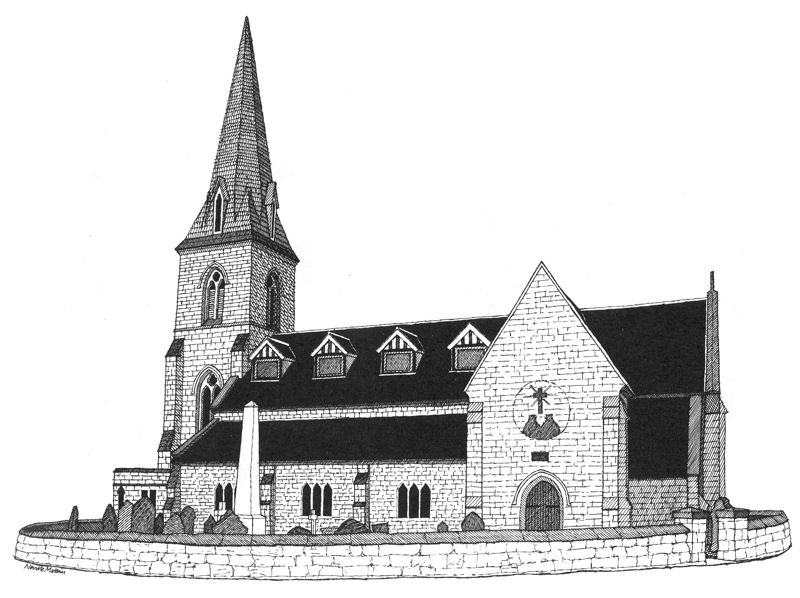|
|
|
![]() back to "The Grand Tour" index
back to "The Grand Tour" index
Neville Malkin's "Grand Tour" of the Potteries
buildings South of the Potteries
![]()
![]()
![]()
next: The Greyhound Inn,
Penkhull
previous:
Mausoleum, Stone Road, Trentham
contents: index of
buildings south of the Potteries
|
No 13 - St. Thomas's
Church, Penkhull
|

St. Thomas's Church,
Penkhull
pen drawing by Neville Malkin - January 1976
|
"It is not difficult to understand why the ancient Celts decided to settle at Penkhull. From their vantage point on the summit of the hill, high above the Trent Valley and commanding extensive views to east and west, they would have been able to spot the approaching enemy in ample time. Many of the finds made at Penkhull date back to ancient times and almost conclusively prove that an early settlement did exist in the village, probably in the form of a hill-fort similar to those at Darlaston and Maer. In various documents the name Penkhull is written in a variety of ways-Pen-a-Hill, Pinchetel, Penkel, Penchul, etc. Some say the name might have originally indicated a hall of some Saxon chief, others that it may signify Primrose hill; another possibility is that Pen, the head, and kyl, a kiln, would describe the village in early times when it contained some of the first potteries in the district. The site of the church of St. Thomas holds an interesting secret that dates back to pagan times. It appears that the inhabitants of Penkhull were at one time called "Penkhull Piles," a title they were not eligible to use until they had been initiated in a ceremony that required them to be drawn through a pool. This pool existed until about 1840 when it was filled in to make ground for the church and churchyard. The church of St. Thomas was built in 1843 from a design by, Scott and Moffatt, with the Rev. Thomas Webb 'Minton contributing £1,000 towards its endowment; a further grant was made by the Lichfield Diocesan Society for aiding the building and enlarging of churches. It is built in the Middle Pointed style and has an open timber roof, transepts, a short chancel and a broach west tower."
|
St. Thomas church from the top of Trent Valley Road
photo: June 2008
|
In memoriam |
next: The Greyhound Inn, Penkhull
previous: Mausoleum, Stone Road, Trentham
contents: index of buildings south of the Potteries
back to "The Grand Tour" index